Sean Jacobs's Blog, page 526
July 26, 2012
Summer List: Africa Tumblrs
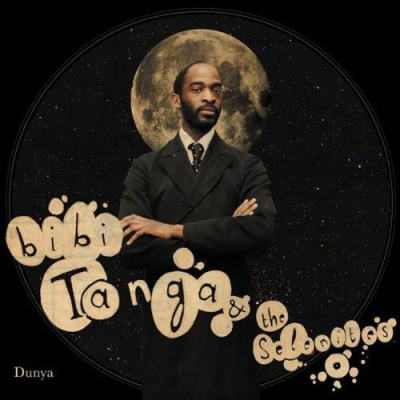
Bibi Tanga & The Selenites – Dunya (as featured on Nigerian Cover Project)
Tumblrs are basically micro blogs for lazy readers who want some eye-candy. They are usually about photos; and tumblr is one of the new genres of social media that rewards one for being able to curate the work of others without the fear of a lawsuit, thus far. Most tumblrs are judged by the number of other tumblrs following them … brings back memories of myspace.com. In picking tumblrs for your viewing consideration while AIAC takes a break in August, I tried out some loose guidelines in the hopes of being fair to all: AIAC tumblr was not considered despite how much we know you love it … do check it out though, in case you previously ignored us. Our tumblr editor will love you for it. I tried to stay on message and only considered tumblrs that dealt specifically with Africa. Hybrids mixing African topics with other topics were dropped out of contention. I also tried to drop off any tumblr that had Africa or Afrika in its name. But that was impossible as some of the best of the best all fail this test. So scratch that. I considered different genres and topics in the spirit of diversity but in the end I just gave up on that too and went with what I liked. Without further ado, here are my top photo tumblrs, not in any particular order, that I think you should be following if you have any interest in Africa. With these tumblrs, a picture is definitely worth a thousand words.
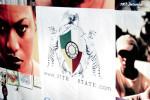 37thState
37thState
The 37thState tumblr is a venture of a collective of filmmakers in Lagos. Based on their posts, one can easily tell that these are film-makers with good taste. They feature style, culture — rural or urban — and never fail to make one think “beauty” when one goes through their blog. I want whatever they are on at the 37th State.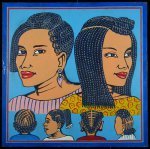 Dynamic Africa
Dynamic Africa
If you are African or black and want to be trended, there is no better stamp of approval than the Queen of African Tumblr-ing. This trendsetter is in her early 20s and based in Cape Town. Dynamic Africa is here to stay. If you are not following her, you are probably a very busy person. Fuck Yeah African Mythology
Fuck Yeah African Mythology
I would love to tell you that the name of this tumblr gave me a pause before putting my stamp of approval on it, but fuck no. This is one of the few tumblrs that I can actually recommend for a nice family time (the family that reads together, stays together). This tumblr narrates African myths, legends and stories with illustrations. It is much needed considering how little many Africans know about their diverse histories and oral traditions. Stick to this and, for what it’s worth, you will get a stamp of approval from AIAC.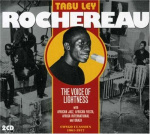 Nigerian Cover Project
Nigerian Cover Project
Before the eye-rolling begins, I suggest giving this “Nigerian” titled tumblr a chance. Though it says Nigerian, this tumblr is very good at covering the continent. This tumblr is truly a continental archive of the arts of album covers from mostly eras that current tumblr fans cannot begin to imagine. Some recent album covers are also featured. For those of us that are older, this tumblr takes us down some memory lanes, both good and bad. African Book Covers
African Book Covers
I know there are some out there that think the last full book written by an African is “Things Fall Apart” and that Africans only write short fiction during the Caine Writing Awards. When you meet such, just direct them to this beautiful tumblr where the author has extensively curated the front covers of books written by Africans, past and present. Whether you are seeking nostalgia (African Writers Series or Pacesetters) or just want to be informed about African authors, this is a tumblr for you. African Women
African Women
With a straight face, I am including this tumblr. Reason being that African women have been patronized for decades and their true contributions to the continent have been ignored consistently. In a world where power is might, this tumblr has decided to focus on African women who have been and are trendsetters and leaders on the continental and global stage. True, some of the selections can be called into question, no name calling here, but one gets the message that African female visionaries have been and are multiple, diverse, and eclectic in their deeds and impacts on the continent.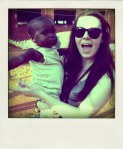 Girl Goes to Africa
Girl Goes to Africa
Caveat: you cannot buy the material on this tumblr in the market. After #Kony2012, Pulitzer winning narcissists and violin playing missionaries all trying to save Africa this year, one cannot help but enjoy this blog with its wit, enlightening words and vigorous correspondences. I’m just glad our readers don’t feature on this tumblr, do you?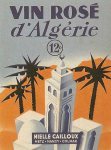 Wine Tumbler
Wine Tumbler
Shameless Self-Promotion (it’s summer, after all): Once in a while, tumblrs can be very useful in promoting niche industries in Africa. This is one of such for Africa. Most do not know that there are at least 11 other countries in Africa that produce wine (bottle and corked or capped wine with labels) apart from South Africa. Most of them are actually very good at it and do export to Europe and the US. This blog [my blog] tries to visualize this niche industry on the continent to tumblr fans through photos, videos, and commentaries. Heritage1960
Heritage1960
This tumblr is a muse board of an e-store, of the same name of heritage1960, purveying African inspired and beautiful goods. While not all of you might not be their target market, I do love the curation of this Tumblr in showing the diversity in “African” fashion, both contemporary and traditional. A combination of the style, beauty and African goods just make it right.
And some other (new) ones worth mentioning:
The following were not included in the list above due to their pointed regional and country focus. Others stand by them to be equally good tumblr ambassadors of the continent: Picture Masr — People of the South — Typical Ugandan.


July 25, 2012
Summer List: Exhibitions and Readings

Meleko Mokgosi, Pax Kaffraria: Sikhuselo Sembumbulu (2012)
Some ongoing exhibitions of interest:
Washington, D.C.: National Museum of African Art with African Cosmos: Stella Arts until December 9
This exhibition traces the development of “cultural astronomy” in Africa’s various regions, focusing on Mali, in the West; Egypt, in the North; and South Africa in the South. The art showcases the inspiration artists and cultures derived from the cosmos, while the supplemental text explores the scientific and practical purposes astronomy held for various cultures. If you are outside the D.C. area, the online page provides high quality images, short blurbs on the pieces, and interesting links for further delving.
New York (Harlem): Studio Museum with Primary Sources: Artists in Residence 2011–12 through October 21
This exhibition centers around three artists, Njideka Akunyili, Meleko Mokgosi and Xaviera Simmons, two of whom are from Africa: Akunyili from Nigeria, and Mokgosi from Botswana. Each artist’s works builds from primary sources, historical documents both personal and objective, in order to inform their own interpretations of the immediate present, reshaping their canvas into an artistic medium of multiple moments in time. Akunyili’s primary sources are the photographs taken from her family albums, which she transfers onto the figures and background, themselves relaying a scene from her past. The fluidity and seamless transitions between the graduated densities of hue visible in her collage do well to portray the porousness of memory and time. Mokgosi’s work brings the political to the forefront and renders the tensions of post-apartheid South Africa, in the quest to uncover what ‘nationhood’ means to Africans. He pulls images out from newspapers, magazines and photographs to populate his paintings, which achieve a high photorealism. By embracing negative space, Mokgosi leaves the narrative open, and allows for our own personal histories to fill in his ellipses.
Manchester: Manchester Art Gallery and other venues with We Face Forward: Art from West Africa Today to September 16
Featuring contemporary West African artists working in various media to musicians and fashion designers, this citywide array of art and culture is a part of England’s expansive programming for the London summer games. One of the featured artists, Emeka Ogboh works with sound to create a dissociative experience between the visual and the aural. Soundscapes of Lagos is positioned on the street outside the Art Gallery and projects the hustle and bustle of a Lagos market. The work forces the passerby to reorient him/herself within the soundscape and imagine a new visual as one’s eyes reassess the scene against the foreign sound. Ogboh hopes to target not just native Brits, but people of the Nigerian diaspora, who themselves will have to face echoes of home. Even if you can’t make it to England this summer, the website provided is a great resource for acquainting oneself with contemporary West African artists.
Cape Town: David Krut Projects with Cross-Currents from July 31–August 25
Apropos to its geography, the gallery’s summer exhibition takes on a nautical theme, and showcases the work of various artists that relates to the sea, in both a figural and literal sense. Alastair Whitton, represented by David Krut and one of the artists who will be featured, has recently completed a series titled Patmos and the War at Sea. His series pairs reworked archival stills of the island with a facing page of text. The text is taken from John’s apocalyptic writings and is coded into braille and enhanced with hand stamped letters, which are meant to connect both image and text. His themes interweave between the wars of conquest and control over the island, most recently fought amid both World Wars, and the apocalyptic and spiritual writings that were undertaken on the island, a former home of the exiled Apostle, John. Whitton’s series, which makes use of the sea as a metaphor for spirituality, as well as emphasizes its physical force and territorial and strategic importance, may well be typical of the range of interpretation that David Krut Projects’ gallery looks to show.
Nairobi: Kuona Trust with Living on the Edge of the World opens July 27
Kuona Trust’s artist in residence, Mozambican artist Mário Macilau, will be exhibiting his photographs after a sight-specific performance by the group, Ithumba on July 27. Macilau is a documentary photographer who focuses on portraying living and environmental conditions over time and across different cultures. From the posters released it seems that his work will be dealing with the impact of garbage on the environment, as well as its economic importance in the lives of the people who pick through it to make a living selling recyclable material. He has in the past taken images of the Hulene garbage pit near Maputo, Mozambique. Many of Macilau’s photographs are shot closer up with the background blurred out, which allows the viewer to focus in on the individuality of the people involved, and the character their struggle brings out, without making their surroundings the main attraction.
On the Lookout (still in Nairobi): Graffiti Art
CNN recently put up a story detailing the graffiti art going up on the city’s walls. The artists are headed by former photojournalist Boniface Mwangi, who has recently redirected his energies towards creating an art with a more urban and public visibility. Known as “Vulture art” the subject matter is political in nature and harangues the corruption of Kenyan politicians, by portraying them as vultures. If any of AIAC’s readers have come across this street art, please share your comments on it.
And a few choice summer readings:
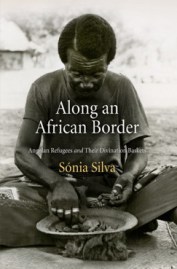 Along an African Border: Angolan refugees and Their Basket Divination
by Sónia Silva
, University of Pennsylvania Press, 2011.
Along an African Border: Angolan refugees and Their Basket Divination
by Sónia Silva
, University of Pennsylvania Press, 2011.
This book looks at the population of displaced Angolan refugees that fled the civil war, which began in 1975 and carried on well through the 1990s, and their cultural production of lipele. Lipele are divination baskets which contain seeds, claws, coins and wooden carvings, which acted as tools with which to help rebuild social, economic, and political relations among resettled refugees in countries such as Zambia, Namibia and the DRC. Silva’s premise centers on the idea that lipele is a ritual, a way of knowing, and a way of living. The author documents the weaving of the basket, its infusion with spiritual meaning, and its function in society. She asserts that the divination function of the lipele aided the displaced communities in interpreting past and present sufferings as war refugees, as well as the passing on of cultural traditions and histories. However, in Drew Thompson’s view, Silva’s research falls short of fully merging the backdrop of civil war with the cultural production of basket weaving, and neglects to ascertain the host country’s responses to Angolan’s cultural practices, among others.
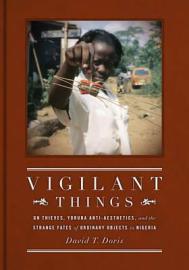 Vigilant Things: On Thieves, Yoruba Anti-Aesthetics, and the Strange Fates of Ordinary Objects in Nigeria by David Doris, University of Washington Press, 2011.
Vigilant Things: On Thieves, Yoruba Anti-Aesthetics, and the Strange Fates of Ordinary Objects in Nigeria by David Doris, University of Washington Press, 2011.
Doris’s book focuses on the “anti-aesthetic” in Yoruba culture, by looking at ààlè objects. Ààlè can be seen as both symbolic forms of communication as well as emblems of vigilant power and threats of cosmic justice. These objects are often placed on top of belongings that are left unattended by their owners. They serve as warnings to thieves of the potential consequences of stealing, as well as invoke the social taboo and estrangement that accompanies moral and ethical transgressions. Thus as an anti-aesthetic, “what [ààlè] reveal provides a necessary complement to Yoruba artistic grace, as well as a broadened awareness of the means through institutional power—the ideological power to determine, proclaim, and enforce the good, the true, and the beautiful—is effected in Yoruba society.” Doris’s writing style is engaging to read, the first person narration refreshingly admits to his potential biases as a Western scholar, and an outsider of Yoruba culture. He also offers the reader personal anecdotes concerning his research into the subject, and these pertinent digressions create a sense of shared intimacy and experience for the reader.


July 24, 2012
Summer List: NYC shows and parties
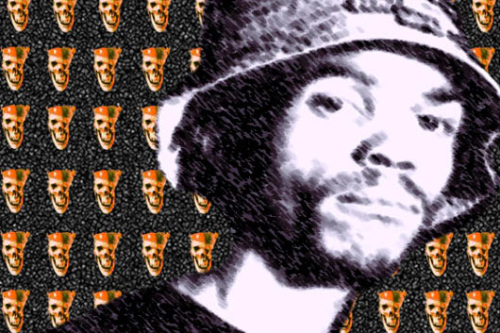
South African DJ SPOKO makes his NYC debut at PS1′s Summer Warmup
[We'll be taking a break from blogging during August. For many of AIAC's contributors, summer's finally here so you'll find us outside. We asked the collective to tell us what they were up to: which shows, exhibitions, happenings they think we shouldn't miss out on, which books they'll be reading, or what music they'll be pumping at their garden parties, and share it in the form of a list. Starting with Wills's pick of upcoming shows and parties in NYC. Tom & Sean.]
AIAC doesn’t always claim a city or even a continent. But we do claim New York as one home among many for live music in the late summer. Below is a short list of recommended shows and parties. Some we’ve discussed on AIAC; some we haven’t. Please feel free to add your own show and party recommendations in the comments section.
Shabazz Palaces’ short film for Black Up is contemporary visual poetry at its best. Butterfly (is it ok to still call him that?) brings his critically-acclaimed fever-dream rap project to Ft. Green Park tonight.
Shabazz Palaces
7.24 | Ft. Greene Park
Venus X and $hanye’s legendary (at least around these parts at AIAC) NYC party returns to its old haunts with some of the artists that were there in the beginning when this party first developed its trend-setting tendencies in 2010.
GHET20G0TH1K ft. Total Freedom, Nguzunguzu, Slink, $hayne and Venus X
7.25 | 200 Varick St.
Check out Los Gaiteros de San Jacinto’s classic Smithsonian Folkways release and you’ll hear the high lonesome and not-so-secretly African sound of America (the continents). It’s gaita music from Colombia and it’s definitely the realest shit happening on Bleeker Street in late July.
Los Gaiteros de San Jacinto w/ Geko Jones (Que Bajo?!)
7.26 | Le Poisson Rouge
It’s hard to believe Turkish psych folk goddess, Selda Bagcan, is coming to NYC for the first time.
Selda Bagcan
7.28 | Lincoln Center
DJ Spoko, an underground South Africa house music genius behind DJ Mujava’s transcendent “Township Funk,” arrives in the US for the first time straight from Pretoria where he’s a local legend for making “Bacardi House.”
DJ Spoko, MJ Cole, Micachu & the Shapes
7.28 | PS1 Summer Warmup
WizKid is massively popular throughout the continent and the Diaspora. People often call him the African Justin Bieber.
WizKid, Banky W, Skales, Rotimi
7.28 | Grand Ballroom
Following on the success of their opening exhibition which focused on gothic futurism of multimedia sculptor and art-rap genius Ramellzee, Susanne Geiss has put together a superb series of concerts this summer in their intimate SoHo space. This one looks particularly good:
James Ferraro, Tim DeWit, Wu Tsang, Shayne Oliver
7.28 | Susanne Geiss Gallery
Timbuktu diva extraordinaire Khaira Arby is back yet again in NYC with her indomitable band.
Khaira Arby
8.1 | Lincoln Center
Sidi Touré, The Pedrito Martinez Group, Wouter Kellerman
8.6 | Marcus Garvey Park
And 2Face is a really good reason to love Naija pop right now, as he has been for years:
2Face, M.I., Brym
8.8 | Irving Plaza


July 23, 2012
Is Hip-Hop artist Ismael Sankara related to Thomas Sankara? Does it matter?

There are many things in life that really don’t matter all that much, but are very intriguing. The line between a person’s privacy and how to inappropriately disturb it by sticking one’s nose where it’s not invited is thin on a good day. It was this conundrum I was battling with, and a little bit of me was convinced that I should not ask Ismael Sankara – a Hip-Hop artist based in Miami and Gabon, but born in Burkina Faso – whether indeed he is related to the late President Thomas Sankara, but at the same time, quite a lot bigger part of me felt that since there’s been speculation we should try to clarify this matter.
There’s a short – approximately 20 minutes – documentary ‘The Rhythm of My Life’ out on Ismael Sankara (watch it here). The documentary implies, if only vaguely, that there’s a relationship between Ismael and Thomas Sankara and it has been said that Ismael is a son of Thomas. Extra-marital at that if that doesn’t get too gossipy, but this has also been contested by people who say they are part of Thomas Sankara’s extended family.
Implied, speculated and contested; surely it would be okay to just ask. I thought I’d give him a week to come back to me.
The documentary is beautifully shot. It’s like an extended music video for no particular song with a fair amount of context. None of the context is in any way critical – nor very analytical – and a lot of it is told to us following the exact standard of popular culture narratives. The style of the commentary, seemingly the sentiment behind it and the overarching braggadocio could be borrowed from any YouTube clip of any band anywhere at the moment. I am not suggesting that the expression isn’t genuine – after all he seems to be cultured to a large extent in the United States, so he isn’t a lost soul copying someone else’s vocabulary and style to express his innermost feelings. That kind of thing is all too commonplace. British author Patrick Neate in his Where You’re At, a book about Hip-Hop around the world, suggests that the expression particularly in this art form, oftentimes, resonates the communal prayers in that what is said is less significant than the fact that it is being said. That this global unity underneath a broad umbrella of an art form is what counts especially to a lot of younger people, rather than the individual messages shared as part of song lyrics or even interviews. I, however, feel like I am too old and perhaps too sceptical to be satisfied by a sense of global unity of any kind – as fascinating as I may find it. Of course, also, around the world the content of these interview clips may vary – none of this is absolute anyway – so if context would have been a tad more substantial and a bit less small talkish it could have gone a long way in making this more of a documentary and less of an infomercial.
Whether Ismael Sankara is a son of Thomas Sankara or not, he wouldn’t be the first offspring in direct lineage of African greatness to have embraced Hip-Hop. I am not sure what happened to the Hip-Hop crew called The Cartel from South Africa. The special thing about this group was that members were the grandsons of Nelson Mandela and Walter Sisulu: Bambatha Mandela and Ziyeka Sisulu. Their performance at the 90th Birthday of Nelson Mandela was rather awkward and other than that I have not heard much of them. They signed a major label deal in 2006, but never became major stars. Not that I necessarily rate major stars just because they are stars, but major labels tend to want major returns for their investment and somehow – in the most major way – I doubt that this had happened. The famous, even heroic names on the background were not enough to polish the music that admittedly needed many more hours of humble practice. These days you can hear some of their material online, which I assume is a bit more recent, without a mention of multinational corporate backing: here and here.
But back to Gabon. Or is it Burkina Faso? Perhaps Miami? A week has passed from my potentially intrusive email to Ismael Sankara and no response has reached me. It might never do, but with some further googling – both searching and translating as this story or anything to do with it is primarily told in French – I am finding some more material, which might be as straight an answer as we can get. Sankara answers the question to someone else,
“ Sorry, but legally I am not the son of Thomas Sankara. To be recognized as his son, this would require an appeal to justice and would raise many sensitive issues … I do not wish to be associated with this. I am an artist, and my work is music.”
It’s hardly a straight answer to the question, but perhaps – and this is all speculation – it supports the idea that was already mentioned; that certain social pressures would make it a topic difficult to discuss. For a fact it further creates a sense of mystery around all this. While the wish of not wanting to discus the matter further is clear, the statement oozes the type of mystery that leaves us with more questions than what we had before hearing it. And yet, I feel like his privacy should be respected.
Perhaps the myth is more valuable, financially and/or otherwise, than a historically accurate version of the story. Does it even matter if he is a son of President Sankara, a relative or someone else? If he is the son, it’s an interesting detail, but understandably these larger than life characters create both blessings and shadows on the way of their offspring who will forever be treated as the son or daughter of that person. Perhaps I should not have even asked him. Perhaps he is too busy to even ever see my email. Perhaps that wouldn’t be a bad thing. After all this question has been asked to him many times before and he has indicated his reluctance to deal with the matter. Hypothetically, if he was a charlatan, then yes, that would be significant. The Hip-Hop market is flooded with artists from all around the world and in order to stand out, everyone seems to need some kind of unique selling point; at times even at the expense of their art and expression. The story told in ‘The Rhythm of My Life’ is interesting even if the opening sequence which, as later on becomes clear, is fictional, creates more confusion than clarity. But these back stories are part of artists and the marketing of their art, and the suggestion of a relation between the artist and a historical figure seems central even if unspoken. We can neither deny nor confirm its accuracy based on the information available. I am unsure how useful of a marketing tool this possible relation – the ‘myth’, as we have called it here – would be in the United States anyway. Perhaps it would make a difference elsewhere. After all he has chosen to use his full name – it’s his name and he has a right to use it and be proud of it of course – but if he wanted the matter not to be discussed ever under any circumstances he could have done what practically nearly every rapper in the world has done and used a stage name.
Perhaps I am too old for some of this music. Many of my rap heroes are in their fifties and while I still have nearly two decades to get there myself, I personally have an appreciation for lyrics that mean something a bit more. Of course none of that necessarily is age specific anyway, but perhaps, as Neate mentioned, the lyrical content of some of these younger artists is less important than the fact that they are living their version of Hip-Hop. Just as I am, in some way, living my own version. These things don’t have to match. And perhaps the suggestion that these two Sankaras are father and son creates an unfair expectation to the younger one to be overtly – or even a bit – political, which doesn’t seem to be the case. The myth remains, but for me it isn’t quite enough to carry the fascination on the music of this young man (or men, if we keep the Cartel in the same analysis), but at the same time life is long and it would be foolish to criticise young people for being young or indeed someone for making music that I am not in a target market for.
Besides contributing to Africa is a Country, the author also is a content producer on Chuck D’s And You Don’t Stop radio show and its international Hip-Hop segment Planet Earth Planet Rap on WBAI 99,5 FM (NYC) and rapstation.com.
Tom Devriendt and Sean Jacobs have contributed thoughts, links and information to this post.


Music from the shadow of a myth

There are many things in life that really don’t matter all that much, but are very intriguing. The line between a person’s privacy and how to inappropriately disturb it by sticking one’s nose where it’s not invited is thin on a good day. It was this conundrum I was battling with, and a little bit of me was convinced that I should not ask Ismael Sankara – a Hip-Hop artist based in Miami and Gabon, but born in Burkina Faso – whether indeed he is related to the late President Thomas Sankara, but at the same time, quite a lot bigger part of me felt that since there’s been speculation we should try to clarify this matter.
There’s a short – approximately 20 minutes – documentary ‘The Rhythm of My Life’ out on Ismael Sankara (watch it here). The documentary implies, if only vaguely, that there’s a relationship between Ismael and Thomas Sankara and it has been said that Ismael is a son of Thomas. Extra-marital at that if that doesn’t get too gossipy, but this has also been contested by people who say they are part of Thomas Sankara’s extended family.
Implied, speculated and contested; surely it would be okay to just ask. I thought I’d give him a week to come back to me.
The documentary is beautifully shot. It’s like an extended music video for no particular song with a fair amount of context. None of the context is in any way critical – nor very analytical – and a lot of it is told to us following the exact standard of popular culture narratives. The style of the commentary, seemingly the sentiment behind it and the overarching braggadocio could be borrowed from any YouTube clip of any band anywhere at the moment. I am not suggesting that the expression isn’t genuine – after all he seems to be cultured to a large extent in the United States, so he isn’t a lost soul copying someone else’s vocabulary and style to express his innermost feelings. That kind of thing is all too commonplace. British author Patrick Neate in his Where You’re At, a book about Hip-Hop around the world, suggests that the expression particularly in this art form, oftentimes, resonates the communal prayers in that what is said is less significant than the fact that it is being said. That this global unity underneath a broad umbrella of an art form is what counts especially to a lot of younger people, rather than the individual messages shared as part of song lyrics or even interviews. I, however, feel like I am too old and perhaps too sceptical to be satisfied by a sense of global unity of any kind – as fascinating as I may find it. Of course, also, around the world the content of these interview clips may vary – none of this is absolute anyway – so if context would have been a tad more substantial and a bit less small talkish it could have gone a long way in making this more of a documentary and less of an infomercial.
Whether Ismael Sankara is a son of Thomas Sankara or not, he wouldn’t be the first offspring in direct lineage of African greatness to have embraced Hip-Hop. I am not sure what happened to the Hip-Hop crew called The Cartel from South Africa. The special thing about this group was that members were the grandsons of Nelson Mandela and Walter Sisulu: Bambatha Mandela and Ziyeka Sisulu. Their performance at the 90th Birthday of Nelson Mandela was rather awkward and other than that I have not heard much of them. They signed a major label deal in 2006, but never became major stars. Not that I necessarily rate major stars just because they are stars, but major labels tend to want major returns for their investment and somehow – in the most major way – I doubt that this had happened. The famous, even heroic names on the background were not enough to polish the music that admittedly needed many more hours of humble practice. These days you can hear some of their material online, which I assume is a bit more recent, without a mention of multinational corporate backing: here and here.
But back to Gabon. Or is it Burkina Faso? Perhaps Miami? A week has passed from my potentially intrusive email to Ismael Sankara and no response has reached me. It might never do, but with some further googling – both searching and translating as this story or anything to do with it is primarily told in French – I am finding some more material, which might be as straight an answer as we can get. Sankara answers the question to someone else,
“ Sorry, but legally I am not the son of Thomas Sankara. To be recognized as his son, this would require an appeal to justice and would raise many sensitive issues … I do not wish to be associated with this. I am an artist, and my work is music.”
It’s hardly a straight answer to the question, but perhaps – and this is all speculation – it supports the idea that was already mentioned; that certain social pressures would make it a topic difficult to discuss. For a fact it further creates a sense of mystery around all this. While the wish of not wanting to discus the matter further is clear, the statement oozes the type of mystery that leaves us with more questions than what we had before hearing it. And yet, I feel like his privacy should be respected.
Perhaps the myth is more valuable, financially and/or otherwise, than a historically accurate version of the story. Does it even matter if he is a son of President Sankara, a relative or someone else? If he is the son, it’s an interesting detail, but understandably these larger than life characters create both blessings and shadows on the way of their offspring who will forever be treated as the son or daughter of that person. Perhaps I should not have even asked him. Perhaps he is too busy to even ever see my email. Perhaps that wouldn’t be a bad thing. After all this question has been asked to him many times before and he has indicated his reluctance to deal with the matter. Hypothetically, if he was a charlatan, then yes, that would be significant. The Hip-Hop market is flooded with artists from all around the world and in order to stand out, everyone seems to need some kind of unique selling point; at times even at the expense of their art and expression. The story told in ‘The Rhythm of My Life’ is interesting even if the opening sequence which, as later on becomes clear, is fictional, creates more confusion than clarity. But these back stories are part of artists and the marketing of their art, and the suggestion of a relation between the artist and a historical figure seems central even if unspoken. We can neither deny nor confirm its accuracy based on the information available. I am unsure how useful of a marketing tool this possible relation – the ‘myth’, as we have called it here – would be in the United States anyway. Perhaps it would make a difference elsewhere. After all he has chosen to use his full name – it’s his name and he has a right to use it and be proud of it of course – but if he wanted the matter not to be discussed ever under any circumstances he could have done what practically nearly every rapper in the world has done and used a stage name.
Perhaps I am too old for some of this music. Many of my rap heroes are in their fifties and while I still have nearly two decades to get there myself, I personally have an appreciation for lyrics that mean something a bit more. Of course none of that necessarily is age specific anyway, but perhaps, as Neate mentioned, the lyrical content of some of these younger artists is less important than the fact that they are living their version of Hip-Hop. Just as I am, in some way, living my own version. These things don’t have to match. And perhaps the suggestion that these two Sankaras are father and son creates an unfair expectation to the younger one to be overtly – or even a bit – political, which doesn’t seem to be the case. The myth remains, but for me it isn’t quite enough to carry the fascination on the music of this young man (or men, if we keep the Cartel in the same analysis), but at the same time life is long and it would be foolish to criticise young people for being young or indeed someone for making music that I am not in a target market for.
Besides contributing to Africa is a Country, the author also is a content producer on Chuck D’s And You Don’t Stop radio show and its international Hip-Hop segment Planet Earth Planet Rap on WBAI 99,5 FM (NYC) and rapstation.com.
Tom Devriendt and Sean Jacobs have contributed thoughts, links and information to this post.


July 20, 2012
What, dear readers, are your most cherished Ramadan meals and traditions?

Saturday Iftaar (Photo by Asim Bharwani)
It’s that time of year once more – Ramadan Kareem all! Last Ramadan I reminisced about my favourite sights and sounds in Egypt during our annual period of fasting and self-reflection. This year, food is on my mind. Particularly my favourite, much beloved dishes from Egypt, historically at the center of trade routes between Africa and Asia. This has produced unique and very popular cuisines with elements from many other regions. I’m leaving the basics out – hummus, baba ghanoush, couscous, falafel, stuffed grape leaves (warak ainab), and anything consisting nearly entirely of za’tar and olive oil – in order to really highlight the diversity of food that has accompanied this nation’s diversity of people. Some of you, especially from parts of East and West Africa, may recognize these dishes by other names.
Egyptians eat a lot of starch-dipped-in-other-stuff, so ful is something of a national dish for us. Rich with tahini, cumin, lemon juice, and garlic, fava beans are boiled and (sometimes) peeled, then (sometimes) mashed to bits and eaten with a lot of fresh pita bread. “Poor people, working people’s food,” my dad sometimes calls it, and it’s true. Very affordable, widely available, filling and delicious, ful is most often eaten for breakfast. During Ramadan it is ideal for suhoor, the pre-dawn meal. [Side note: one sure way to spot an Egyptian is to assess their bread-to-main-dish ratio. The country has erupted into riots over bread twice since 1952 for a reason. Hilariously, Anthony Bourdain predicted this when he first tried ful in Cairo.]
Another national dish (we have quite a few of these, you’ll notice) lives on from Pharaonic times. It’s called mulukhiyya – a distinctively slimy green soup made with a green plant that Wikipedia informs me is from the Corchorus genus. (As a friend stated the other night at a dinner I hosted, “I don’t know a SINGLE Arab who knows what the heck mulukhiyya is really called.”) For fans of that other slimy Egyptian meal, bamya (okra stew), mulukhiyya will make you very happy. Like so many other dishes, what goes in it (besides the mallow leaves, the only absolute) depends entirely on region. In Alexandria my grandmother would serve it with white rice and bread on the side, and maybe a little rabbit meat for my father and uncles (we kids could not imagine eating the cuddly bunnies we had walked past in the market).
Something a little more special, if only for the time and cost that can go into it, is stuffed pigeon. Literally called hamam. Which always confused me as a child, because… well, if you speak Egyptian Arabic you probably know what else it means! The pigeon is stuffed either with rice or bulgur wheat, but always with a lot of spectacularly eclectic herbs. It took me a long time to like stuffed pigeon. Mostly because my father would chase me around the flat with a freshly-plucked pigeon in his hand while yelling, “Hanafi! Hanafi!” If that seems slightly sacrilegious, it’s because it was.
Now I know a lot of you are thinking “Where is the koshary!?” Please forgive me. I’m from Alexandria. You Cairenes are the experts of koshary. We simply do not value it as much as you do, and we put lots of shrimps in it when we can. Also sacrilegious. Let this stuffy Al Arabiya report explain what I cannot do justice to:
The thing about fasting is that we’re supposed to be practicing our self-control, reflecting on those who do without, and ultimately become closer to our faith. The other thing about fasting is that not eating or drinking all day makes you very hungry, which then makes you feel as though you can eat everything in front of you. This, clearly, is shaytan trying to influence us to behave as unbecomingly as possible once it is time to break our fast. After our dates, milk, and the three spoonfuls of rice we can manage to fit into our rapidly shrinking stomachs, most of us are trying really hard to stay awake for at least another hour. In part because it is a particularly special blessing to feed others during Ramadan, which is why areas with a large population of Muslims will typically arrange community dinners open to all. But another reason is dessert. (And yet another reason is Taraweeh. I think my priorities are a bit out of order.)
In Egypt, basbousa – an intensely sweet semolina cake, also known as hareesa – is exactly the right consistency to eat with your equally sweet and very dark mint tea. Instant food coma – it feels like a rock in your stomach. Umm Ali is another, and guess what the main ingredient is!? That’s right – bread! A bread pudding chock full of pastry dough, sweet milk, fruits, nuts, and cloves. “Rock in your stomach” is the theme of Egyptian cuisine, but it’s partly how we manage Ramadan in the summer without Mubarak turning back the clocks ‘for’ us. There are many other sweets we share with our neighbors – baclawa, kanafeh, rice pudding and qatayef – but I have especially fond memories of my father melting dried apricot paste into a sweet, hot drink for us during those winter Ramadans. And, perhaps as it so often is during special times, I never figured out what he did to make it so soothing after a day of fasting.
Maybe, like Ali Hasan Kuban says, it’s all that sugar:
These foods are my cultural anchors to Egypt while I live in the United States. But what I love most about Ramadan, the season when we must confront our privilege and give what we have to those who need it most, is sharing the cultural anchors of my fellow Muslims, from all over the globe. I realize I’m very often tongue-in-cheek on AIAC, but I truly am constantly in awe of how little I know about how diverse Islam and its followers really are. So I’d like to turn this over to our patient readers: what are your most cherished Ramadan meals and traditions?


Lesotho gets the Kristof Treatment
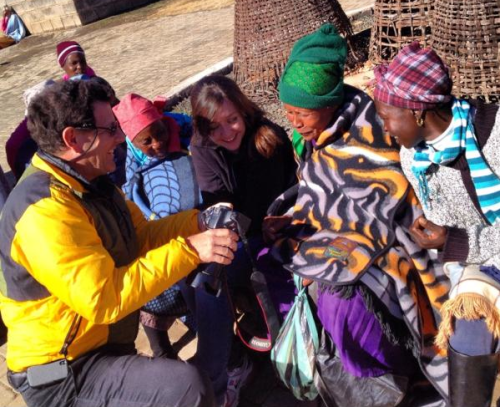
Earlier this month, on his latest escapade to the African continent, the illustrious New York Times columnist Nicholas Kristof paid a visit to the Kingdom of Lesotho. The occasion was his annual “Win a Trip with Nicholas Kristof” journey in which a young university graduate is granted the opportunity to travel with Kristof and witness his legendary reporting in action. He did not disappoint.
While in Lesotho, Kristof made sure to faithfully maintain his trademark journalistic formula. The Kristof method, which has been remarked on by AIAC and others in the past, involves transforming his surroundings into a backdrop for promoting a constructed moral imperative. Crucially, each article must contain a familiar entity from Western society – an aid worker, a non-profit, a US government agency – to allow the chosen cause to appear more accessible to his readers. The absence of such a bridge, we are led to believe, makes a story wholly uninteresting. In the process of fashioning a narrative, of distilling the socio-economic condition of an entire country into a newspaper article, comprehensive details become dangerous clutter and are to be discarded, for they threaten to numb the empathetic response of the article’s audience.
For Kristof, the world, far too complex on its own, must be dismantled and reassembled on a much smaller scale to fit snuggly inside an inspirational 1000 word column. In this world, Africa is (monolithically) rising, declares Kristof. The Chinese, recognizing Africa’s promise, have flooded it with foreign investment. If Americans are to promote lasting economic growth and job creation in Africa (and to maintain their global dominance), they must do so through investment as well. African resources and labor are ripening fruit on the vine, yet the fruit could be even sweeter and riper, if only incentives for investment are enhanced. At $120 per month, the minimum wage for Lesotho’s textile workers is much too high.
Back in reality, homegrown African ingenuity ought to feature prominently as a key driver of growth in African societies without being ignored in lieu of foreign investment. In Lesotho, the textile workers aren’t exactly showering Chinese factory owners with adoration. Quite the opposite. They’ve held protests for better wages and working conditions. In June, when the people of Lesotho voted in democratic elections to select a new Prime Minister, opposition leader Thomas Thabane came away with the top job. Thabane was successful at the polls, in part because he had promised as a political candidate that if elected he would put an end to “slave wages”. The manner in which Thabane reconciles the interests of foreign investors with the demands of labor unions remains to be seen, yet it should be fascinating to observe.
Yesterday marked the opening of the 5th Forum on China-Africa Cooperation (FOCAC) in Beijing. This has traditionally been a venue for Chinese and African leaders to extol the virtues of their partnerships and to announce massive new trade deals. There will be many photo-ops, handshakes and smiles among high representatives and heads of state. Imagine however, if textile workers from Chinese-run firms in Lesotho were invited to join attend the FOCAC along with copper miners from Zambia and construction workers from Liberia. Would Kristof report on how jubilant the FOCAC festivities were?
Nicholas Kristof clearly intends to change ill-informed perceptions of African countries and shed light on what he perceives to be underreported issues. Yet, as long as he allows his journalistic formula to override comprehensive reporting, it will be difficult to ascertain how much of his reductionist style is for the benefit of readers and how much can be attributed to the hazards of parachute journalism.


July 17, 2012
Silent Elections
This is a bit older, but still worth watching. Above is a short clip from ‘Silent Elections’, a 40 min. documentary film Belgian video artist Sarah Vanagt produced in 2009. In the opening scene, she explains how “[in] 2005, I met Tonton (15), Dodo (14), and Daniel (12), three street children living on the lava in Goma, Eastern Congo. One year later I sent them three digital cameras from Brussels. I asked them to document the election process, the first democratic elections since Congo’s independence in 1960. With support from a local arts center, Tonton, Dodo and Daniel wandered the streets of Goma with their cameras. Little by little they sent their images back to Brussels: glimpses of the run-up to the [2006] elections, the campaign, the first and second rounds of voting, the celebratory atmosphere… Looking at their silent images, reminded me of the early films from the Lumière brothers. As if these “videographs” from Goma offer the very first views of the very first elections.”
All details here.


July 16, 2012
Five alternative filmmaking collectives
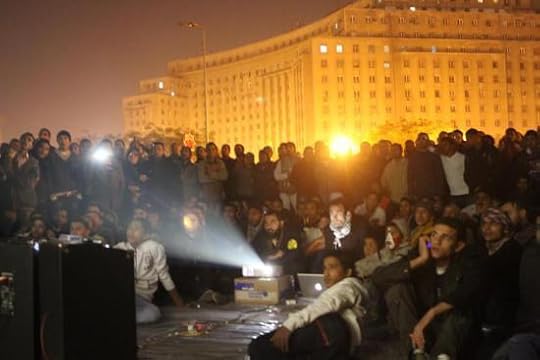
The Mosireen Cinema
Theatrical release is the holy grail of filmmaking. Well, it was until relatively recently. But, since the internet, dvds, digital files and all the other ethereal modes of sharing and circulating became available to the masses, alternative modes of film production and distribution began to challenge the studio system, the distribution system, and perhaps even cinema itself. We’re all well aware of the nearing doomsday of celluloid, the ‘end of film’. Yet, this is only a fraction of what constitutes ‘film’.
The challenge to the cinematic system comes, arguably, and perhaps most provocatively from the African continent, where whole industries, most notably Nollywood, have both anticipated – and eclipsed – a future of moving image circulation that Western countries are still approaching with fear, still scrabbling, prosecuting and asserting copyright, when clearly the way in which we consume images and film is changing radically.
In the light of these changes, I assembled five filmmaking collectives that are reinterpreting and reinvigorating notions of collaboration and distribution.
Chop Cassava, Nigeria
Marie Antoinette declared ‘let them eat cake!’ (apparently), thereby revealing her obliviousness to the plight of normal people in 18th century France. Chop Cassava, a filmmaking collective in Nigeria, attribute their name to the same sentiment; implying that the removal of fuel subsidies by Minister of Finance Okonjo-Iweala, revealed a similar such obliviousness, ‘let them chop cassava!’
Chop Cassava was a series of web films and a blog that documented the January 2012 fuel subsidy protests in Lagos, Nigeria. Where the rest of the worlds media were either woefully ignorant, or hesitant to report on the protests, Chop Cassava documented marches and interviewed individuals, providing in-depth and consistent coverage.
Each day, they compiled footage from various mobile phones, video cameras, and their own film crew. Their coverage was dispersed, meandering, at times polemic and others entirely observational. They provided immediate documentation of the protests where elsewhere, this – the largest peaceful protest in Africa for many year – was ignored.
This powerful statement from their website captures their aims as a media collective:
It was clear that something had shifted in the Nigerian consciousness, which requires a different sort of documentation. Our challenge was, shall we just stand back and document or shall we have an opinion. Should we editorialize history as it unfolds?
The Mosireen Collective, Tahrir Square, Egypt
Mosireen is a non-profit media collective born out of the explosion of citizen journalism and cultural activism in Egypt during the revolution in 2011.
Similarly to Chop Cassava, Mosireen assembled footage from mobile phone and video cameras throughout the protests, editing short films together that documented the vast protests that were gripping Cairo, indeed the whole of the Arab world at the time. And again, where news agencies and journalists were hesitant to enter the crowds, or were offering neutered, Mosireen grouped together to produce their own documentation of events.
One of the key members of the media collective, filmmaker Khalid Abdalla says of the project;
The majority of the footage is amateur, but a lot of it is filmed by us or by our friends
It’s part of the culture of creative commons, an open sourcing for film that allows us to share our stories. We did an open call for people to make films which we were planning to have screened on TV but then the sit-in started again and three days ago we decided to start screening in the square.
The Mosireen collective is vital for it addresses ideas and practices of archiving, open source filmmaking, collaboration and cooperation in a cinematic and political context.
[The] archive we’ve built is not ours, it’s the Egyptian peoples; it was filmed by the Egyptian people, it’s their story and it’s our story but a lot of people haven’t seen it. This country is going to be unpacking what happened here for generations and you never know what’s important and what isn’t. There are two things happening- there’s a duty to the present and a duty to the future and we’re trying to fulfil both.
Mosireen on Youtube, Twitter and facebook.
Slum TV
Slum TV are a media collective that ‘provide a means of expression to informal settlement communities in Kenya by providing the pertinent tools for this.’ They predominantly work in the Mathare slum in Nairobi, providing training and production support for residents wishing to make films. As a result, Slum TV has helped to develop a new visual culture, one that is both entertaining and educational; the narratives always feeding back into the community and offering some light and perspective on the lives lived in informal settlements like Mathare.
You can watch many of the films on the Slum TV website, here.
In August, the Slum Film Festival will run in both the Kibera and Mathare.
Sam Hopkins, one of Slum TV’s founding members describes the screening process:
The material is collated and screened on a monthly basis in public space in Mathare. Thus it functions like a ‘newsreel’ and affords the slum dwellers a form of local news. Having been screened locally, the content is then uploaded onto the website, which functions both as an archive of this oral history and a means to access a secondary, international audience.
ZaLab
ZaLab is a filmmaking collective that ‘hosts participatory video and documentary workshops in intercultural contexts and situations of geographical and social marginalization.’
Particularly powerful is their commitment to telling the stories of migrants who cross the Mediterranean from North Africa to Italy and Spain, and their dedication to outing the horrific practices of the Libyan police when migrants are returned.
I initially came across ZaLab after reading this wonderful article by Maaza Mengiste, the Ethiopian writer, who published a moving article in Granta magazine about the journey of one particularly man, Dagmawi Yimer. Mengiste writes about the torturous journey that finally led to Dagmawi’s arrival to the Italian island of Lampedusa, over a year after he set out from Addis Ababa. Since settling in Italy, Dagmawi became a member of ZaLab, making documentaries collaboratively with other migrants about their experiences, to drawn attention to the journeys that are made.
In a year when reports of the dehydrated dead, exploited and left floating at sea have dominated headlines, the activity of ZaLab is all the more important. Their films are engaging, moving, informative and a vital resource to make known what people will endure for the hope of a better life in Europe. Dagmawi also helped to found The Archive of Migrant Memories, in Rome.
The Otolith Group
The otolith is the part of the inner ear that establishes the body’s sense of gravity, orientation and balance. Taking its name from this bodily compass, The Otolith Group seek to use moving image to orient themselves, and us, within a wider cultural and theoretical context.
They want to ‘build a new film culture’. At times their films are difficult to penetrate and draped in theoretical references that escape many viewers, however their work that deals with Africa, particularly the work of John Akomfrah (formerly of the Black Audio Film Collective), militant filmmaking, ‘audio poverty’ and migration is powerful, thought provoking visual art.
You can see an inventory of their work here.


Timbuktu: whatever happened to the African Renaissance?

Hamou’s Majlis (Photo by Alexandra Huddleston)
Mali in the rainy season has its own rhythm, especially in the South: long days under heavy skies anticipating rain; moments when it comes so powerfully the world seems ready to end. Afterwards, a peculiar freshness and coolness, and new brown streams gurgling everywhere. With Ramadan coming soon, that rhythm will be syncopated, the regular beat of fasting, praying, and feasting punctuated by the shifting rhythm of the storms. Over the last few weeks, the rhythm of Mali’s ongoing political crisis had slowed to a painful shuffle, until last week’s assaults on the tombs of saints, scholars and prominent ancestors in Timbuktu punctuated a long, leaden moment.
Armed with pick-axes and hoes, the Salafists of Ansar Dine made easy work of adobe tombs in “the city of 333 saints,” just as they make easy headlines with their cynical and violent distortions of Islam. In a radio interview, the scion of one of Timbuktu’s prominent families—recognized locally as descendants of the Prophet—was virtually in tears talking about what had been done to the city and to his father’s tomb. Outsiders wailed and gnashed their teeth. Foreign journalists were taxed as sensationalists for covering—or creating—the story, but it might be wiser to appreciate their efforts to keep the crisis visible. From the Hague—hardly the city of saints—came dark rumblings about the International Criminal Court, which does not practice hudud punishments but does take seriously crimes against humanity… and against UNESCO world heritage sites.
We’re a long way from the African Renaissance. That idea, dear to the heart of former President of South Africa Thabo Mbeki among many others, largely propelled the revival of efforts to preserve Timbuktu’s manuscript tradition. South Africa took the lead in rebuilding the Ahmed Baba center, investing in preservation and cataloguing, and committing to the hard work of protecting a fragile and diffuse written heritage. The South Africans were far from being the only actors on the scene. Since the late 1990s, their interest—and that of others, including American literary scholar Henry Louis ‘Skip’ Gates—had generated a market for manuscripts and a series of private ventures that was symptomatic of the broader moment in Malian political life, in which everyone was trying to get a piece of something. Still, the dedication and the good intentions of the scholars are admirable, indeed beyond reproach. Early in the current crisis, many African researchers expressed their concern over the danger the conflict in the North posed to the region’s intellectual treasures. They knew what was at stake. Over the last decade or more, Malians, Nigeriens, Senegalese, South Africans, and Canadians had begun to circumscribe and engage with a polycentric and dynamic Sahelian Muslim intellectual tradition that extends far beyond the city of Timbuktu. They revived an initiative that had begun nearly fifty years ago and some of their work—like Bruce Hall’s intellectual history of the Niger Bend—already helps us to understand what is going on in Mali today. At the moment, tombs and everyday people rather than manuscripts are the targets of Ansar Dine’s grandstanding, but those invaluable papers can easily be sold or simply dispersed. Although reports on the state of the collections are dire, the heir of at least one of the richest private collections reportedly salvaged it well before the city fell to Islamists and Tuareg separatists in April. There’s hope.
If the manuscripts are imperiled, the human tradition is probably less fragile. After all, a good deal of what we know about the history of the city and the region in which it sits comes from what its native sons—including Ahmed Baba—wrote in the wake of another invasion from the north, the Moroccan conquest of 1591. Little solace in the present moment, I know… but take a look at Alexandra Huddleston’s exquisite short film composed of images of everyday learning in contemporary Timbuktu. That pedagogy is a living, spoken one, and it will return. Some 300,000 Malians have fled the North in the last few months, and the coming holy month will surely be a bitter one for them and their compatriots. Perhaps history offers some small solace. Timbuktu’s most celebrated exile, the sixteenth-century scholar Ahmed Baba, who was held hostage in Morocco for many long years, eventually returned to the city of saints. By the same token, the power of the ‘African Renaissance,’ going back to the West Indian E.W. Blyden and the South African Pixley Seme, lies in its endurance.


Sean Jacobs's Blog
- Sean Jacobs's profile
- 4 followers







